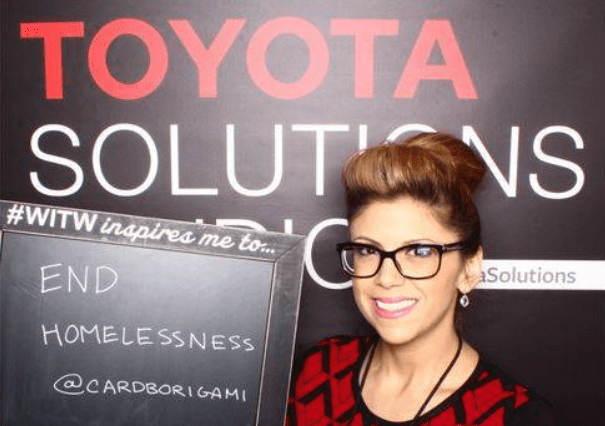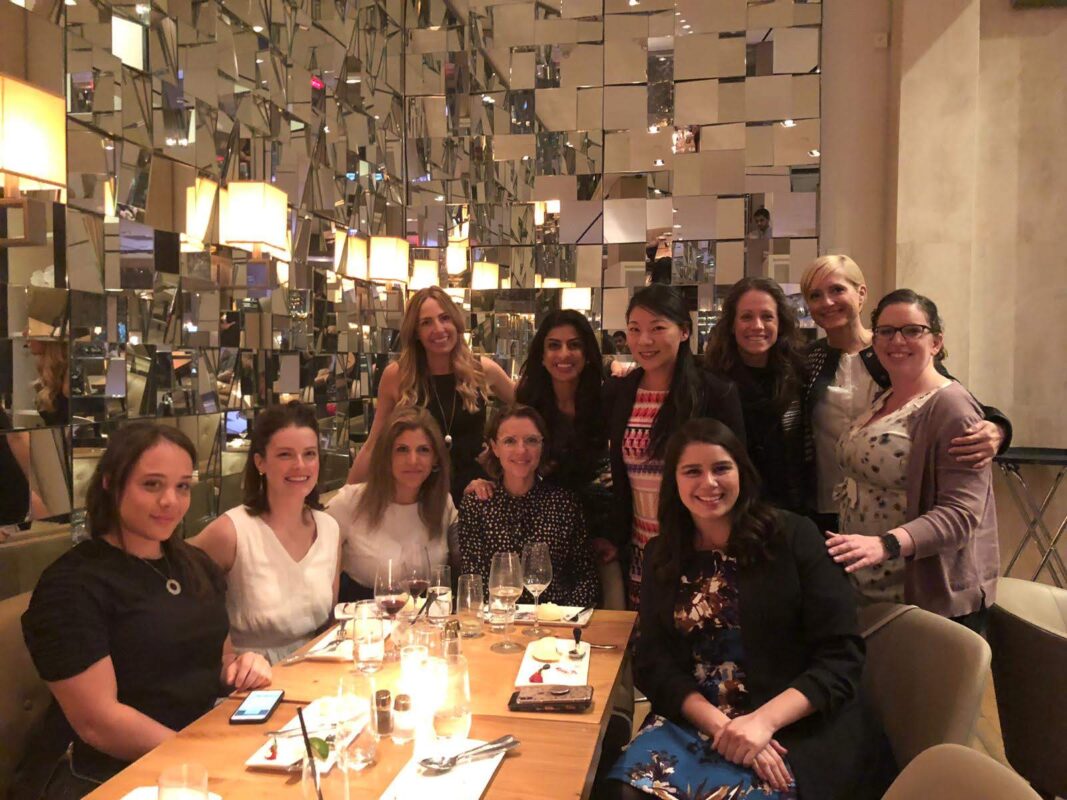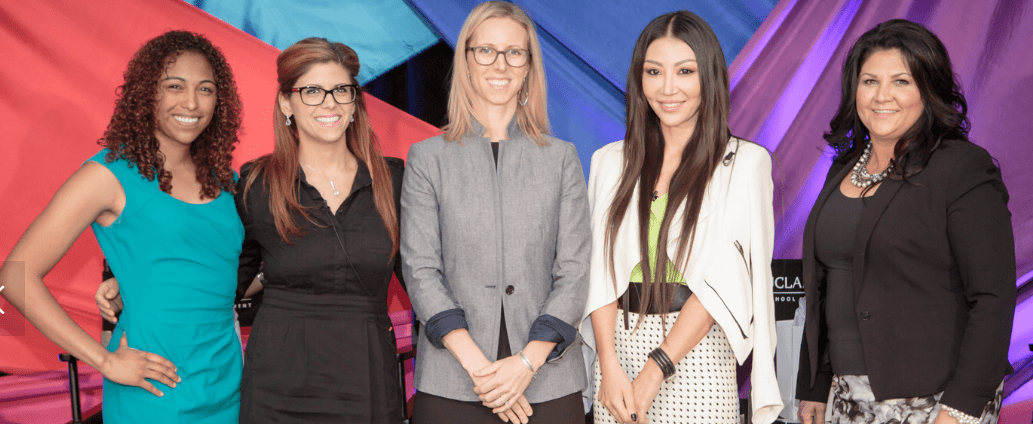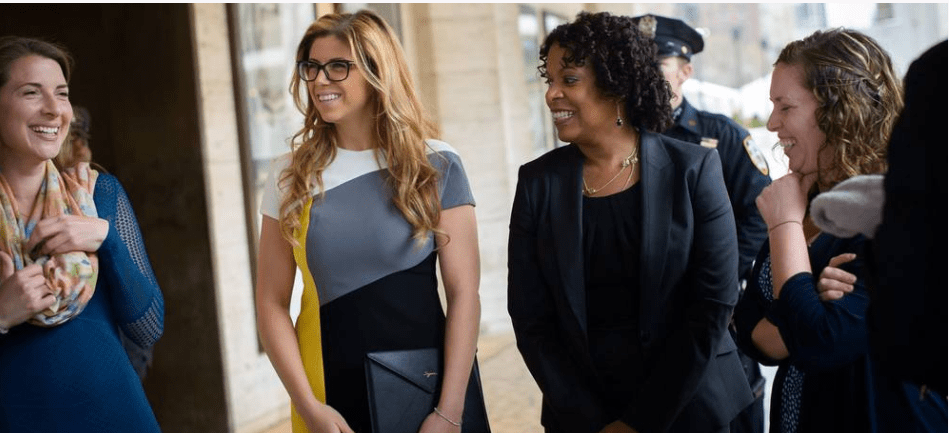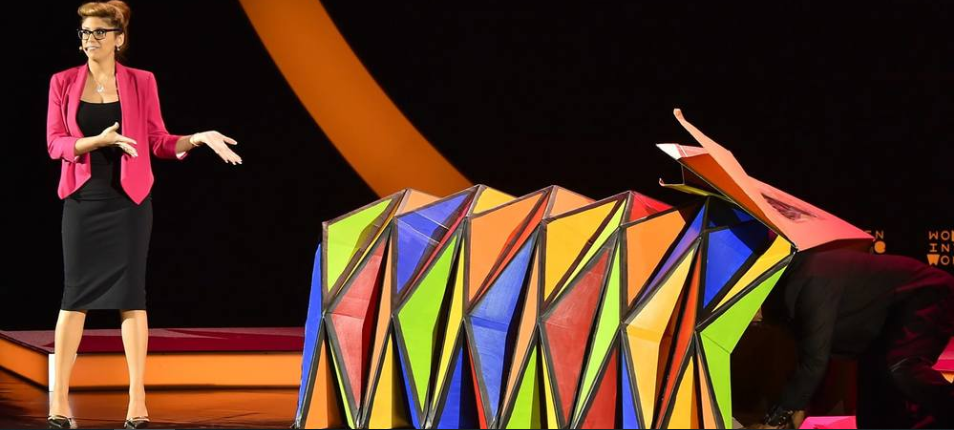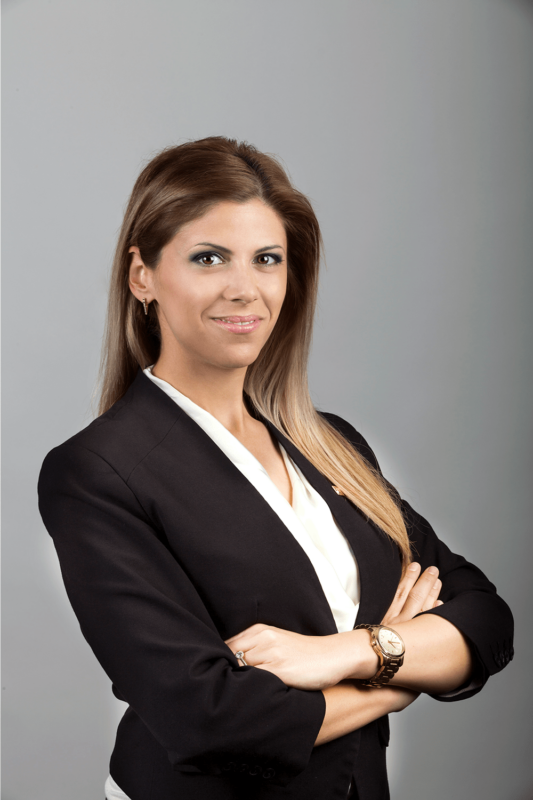Meet Tina Hovsepian, an architect, and philanthropist who designed and built a prototype of a temporary shelter made of folded cardboard, Cardborigami. In recognition of her humanitarian work, she was titled Mother of Invention by Toyota, she is on the Forbes 30 under 30 lists of Social Entrepreneurs in the USA.
Who is Tina Hovsepian? define yourself
I can be defined in many different ways; Woman, Architect, Entrepreneur, Director, Daughter, Crazy, Visionary, Lazy, Fun, etc. The list could go on. However, I define myself as a person who is doing my best to live a good life, be there for friends and family, and provide inspiration and hope to others. I hope I inspire people to do something, whether it is small or large, to make the world a better place.
My motto has been to never give up and dream big. This has been inspired by my Buddhist practice and this is how I try to inspire and encourage others
Tell us more about your family, how were you as a kid?
I have a family full of very strong and independent women. My family is also mostly very entrepreneurial and creative on my father’s side. However, I am the first in my family to go to college and everyone was very proud that I went to the University of Southern California which is a very prestigious school (despite recent scandals). My mentor growing up was my father’ sister. She is very open-minded and creative and encouraged me to be independent of a young age. She helped me get my driver's license before I was 16 years old and she hired me to be her assistant as a make-up artist even before that. I believe this is what shaped me to become the strong-willed woman that I am who is also entrepreneurial. As a kid, I was an only child with a lot of love from my small immediate family. I have to admit I was a bit spoiled. I was also shy around kids my age until high school when I developed a strong group of friends and became more comfortable and outgoing. People are surprised to hear that I used to be shy because, nowadays, I give talks in front of thousands of people per year about my work and my passion with no fear. I am glad to say that I have exceeded my family’s expectations for me in many ways and I am grateful for them giving me this opportunity to grow up in the USA and the opportunity to get an education in a field of my choice. I truly love them all.
You have a Bachelor degree in Architecture (B.Arch.) at the University of Southern California, why did you decide to study that?
Growing up, I loved to sketch and design women’s clothing, so I wanted to become a fashion designer. My father’s sister, as my mentor growing up, advised that I get a professional degree in design: Architecture. This way I would have the education to fall back on if the fashion career was not successful. I thought it was a great idea and that is why I applied to architecture schools. After I got accepted at USC and started classes, I realized that I loved designing buildings and decided to pursue this career 100%, including to obtain my architectural license which I did in 2016.
It just makes me really upset that we have such great disparity in wealth, causing so many to suffer, while that wealth that is being accumulated is on the backs of these very same individuals. It disgusts me
You are in your early 30´s. You have worked in different companies of architecture in distinct job positions as a project manager, associate, designer, etc. Recently you are Sr. Project Architect in M-Rad Architecture and Design Director in Oceanwide Plaza LLC, you manage very big projects as the Oceanwide Plaza that is one of the largest global conglomerates in the history of downtown Los Angeles. You were recently recognized on Forbes’ 2017 30 Under 30 list, received the Muhammad Ali Humanitarian Award in 2016, and you were named Mother of Invention by Toyota, which is a program to celebrate women who are driving positive change in the world through innovation, entrepreneurship, and invention. What´s the recipe of your success?
My main recipe for success is having a strong foundation for my life, firstly with a strong relationship with my close friends and family, and secondly based on the life philosophy of Buddhism. I have been practicing daily meditation since 2006 and I have consistently used this practice to help me focus on my goals and dreams. Buddhism also emphasizes the importance of appreciation for your parents and also the importance of healthy interpersonal relationships. I believe this is not only the recipe for success but the definition of it. The awards and other titles are just extra bragging rights. All jokes aside, I am very proud of my accomplishments and sometimes forget to let them sink in, they have helped me gain more confidence in my work and in every aspect of my life. Even if it seems impossible, my motto has been to never give up and dream big. This has been inspired by my Buddhist practice and this is how I try to inspire and encourage others.
Another Buddhist concept that really resonates with me is the interconnectedness of all life which essentially means that when we help others we are creating a better world for them and for ourselves as well. That is also a core part of me and what fuels the type of work I do with Cardborigami and trying to help the homeless communities both in LA and around the globe. It just makes me really upset that we have such great disparity in wealth, causing so many to suffer, while that wealth that is being accumulated is on the backs of these very same individuals. It disgusts me.
You founded Cardborigami, in 2010, making collapsible, transportable and origami-inspired shelters out of cardboard for the homeless and those displaced by natural disasters. How this idea came from? What did it drive you? tell us more about this project.
Growing up in LA I encountered people who were experiencing homelessness often, usually people asking for money in front of a grocery store or on the sidewalk. As a child, I have very clear memories of the 2 different reactions people had towards these homeless individuals. On one extreme side of the spectrum was my mom, who would get visibly upset and ignore the person asking for money, on the other end was my aunt who would go out of her way to give someone money, buy them food, or even just have a conversation. What I remember about these experiences is how this made me feel. My mom’s reaction made me feel bad and my aunt’s made me feel good. Actually, there was one time where I was a passenger in my aunt’s car and she saw a homeless woman that she knew and asked me to go and give her money while she was at a red light. It was an exhilarating moment but I did and we laughed a lot but also felt like we did something good.
Fast forward to my time as an architecture student at USC, I had the opportunity to study abroad in Southeast Asia. When we visited Cambodia, it was the first time that I saw how people in developing countries live. There was none of the basic infrastructure or comforts that we take for granted in America. This truly changed my perspective on life and when I came back to LA I realized how spoiled we are. In addition, I thought of the homeless people living in skid row and decided that this was unacceptable because the circumstances were actually worse than the village I visited in Cambodia. America has the wealth and resourced to care for all of the people living here, yet there are places like skid row in every major city. That same semester after I returned to LA is when I designed and built the first prototype of Cardborigami, intended to help shelter people who are homeless in LA.
My main strategy has been to put the ideas out there and engage with any supporters who reach out to me. In this way, we have continued to grow our nonprofit as a fully volunteer-run organization with minimal overhead
Your shelters have been requested by over 92 different countries, do you donate all that is requested or are they under strict selection depending on the cause, how does it work?
The main deciding factor of whether or not we can collaborate with an individual or organization in another country is based on the capacity to deliver our shelters in a way that will be meaningful and helpful. For example, if someone wants to purchase shelters but not have any infrastructure for how to distribute them to those in need, we cannot work with them. The few distributions we have done were with a smaller and local organization that was familiar with where the shelters will be used and how. They also need to have the funds or transportation required in place.
What is the most the rewarding aspect of your position as founder of Cardborigami?
I really enjoy meeting people and learning their stories. To me, the more rewarding aspect is creating these new friendships with people who make our shelters as well as those who use them. It brings me great joy.
What is one strategy that has helped you in the growth of Cardborigami?
My main strategy has been to put the ideas out there and engage with any supporters who reach out to me. In this way, we have continued to grow our nonprofit as a fully volunteer-run organization with minimal overhead. There have been times where the organization would have gone under if we had high overhead so that is my long-term strategy to be able to have a greater impact while maintaining the low overhead.
What is the reality of your day-to-day?
My day to day is never dull and never repetitive. I currently have many different projects going at once so I have to juggle them all. Sometimes it means a day full of back to back meetings and events. Other times, I go to my office and catch up on things for the whole day, yet other times I am traveling to other countries and the airplane is my workspace. It is truly exhilarating and I love it.
The only thing that is not ok is living without knowing what you want and what will make you happy because then you have no way of getting it. I believe anyone can set goals and achieve them, and none are too small or too big
Do you have any particular philosophy that guides your career decisions?
Yes, as I mentioned I am Buddhist. Specifically, I practice Nichiren Daishonin’s Buddhism with the Sokka Gakai International. The basis of this Buddhism is to apply the philosophy to daily life. The goal is to create world peace through individual happiness and to spread peace, culture, and education around the world through the lens of this philosophy. I always find myself chanting about business decisions as well as studying Buddhist philosophy to see how it applies to my current situation or a decision that needs to be made or a goal that I want to set in my career. Then, I chant daily with the determination to make the decision transform into the best thing for my life or to meet the goals that I set. It is truly a great practice.
As an entrepreneur, what is the one the thing you do over and over and recommend everyone else do?
My personal business style is to say yes to all opportunities since you never know what it will lead to. I can’t recommend for everyone to do this, however, because that may not be their style. Some people have the attitude to focus on one end goal and say no to any other opportunities as they may be distractions. I guess all I can suggest is to look at opportunities and challenges from different perspectives. For example, a seemingly unrelated speaking opportunity may be seen as a distraction from your task at hand. I would suggest being open to it may be leading to adjacent opportunities that you cannot imagine instead of considering it a distraction and saying no.
Many authors say women can and must strive to have everything – a shining career, a blossoming family life and a perfectly balanced lifestyle all at once, others point out that– then women are placing unrealistic expectations on themselves, if they believe they can have it all, I do not know if you are married and/or have kids, so according to your experience, what do you think about these statements?
I have a saying that I constantly repeat as I go through life and experience new things and meet new people and learn about their lifestyles: Everyone is different. There is no one size fits all happiness in life for anyone, man or woman. However, my personal opinion is that there are certain expectations from women that are based on old, patriarchal societal norms that still linger in our modern times, even in America. Because of this, and the natural insecurity of women in general, I feel that many women do not know what they want in life or what would make them happy. We just are not taught to spend time thinking about these things since we spend all of our time caring for others. I personally never wanted to bear children but I am open to adopting because so many kids out there already are in need of parents. Also, selfishly, I find it a bit disgusting what the body has to go through in order to bear children. However, at the end of the day, my happiness is based on my wellbeing, the wellbeing of my family and friends, and being able to help people in my community however I can. This is what I want out of life, and I am able to do it for myself.
Other women may want other things and that is fine too. The only thing that is not ok is living without knowing what you want and what will make you happy because then you have no way of getting it. I believe anyone can set goals and achieve them, and none are too small or too big.
What do you like to do in your spare time?
I like to spend quality time with friends and family. We laugh a lot which is my favorite part of my personal relationships. I also like to run, do yoga, attend Buddhist meetings, and get involved with any local initiatives to help the homeless community. I also love to travel, attend conferences, and speak at them too.
What are your plans for this 2019?
This has been a year of transition for me so far but I finally know what my next steps are. I want to create enough wealth for myself so that I can freely help my family as well as fund the programs we have designed under Cardborigami to help shelter more and more people in need. I plan to do this by continuing to grow my Architecture and consulting business and I am already set to meet my financial goals for the year!
There is still the glass roof for women in the world: Fewer opportunities, jobs underpaid just for that fact of being a woman, etc. Have you experimented the glass ceiling? if yes, What are the biggest challenges you have faced and how have you overcome them?
There is absolutely still a glass ceiling for women, however, I feel that one by one we are cracking it. I recently attended the Woman in the World Summit in NYC and actress Brie Larson who recently earned $5 million for her role in Captain Marvel. She said something that really made sense to me. She said if people needed this to be another reminder in this decade that women can make millions then I am glad to have done that. I felt that she was so confident and I hope that the women who read this interview are inspired to ask for what they are worth. She also said: “Money is something I am actually excited to talk about but they make you feel icky about it so that you do not ask for what you deserve. I tell people, do not even do it for you if that makes you feel weird about it right now. Do it for the women who will come after you, do it for the future you, if that helps you feel more empowered, then do it, we need you!”
What tips can you give to young girls who want to work in the construction/ architecture sector?
Find a good mentor or two in the field who can guide you. Also, this is not an easy field let alone for a woman, so there is a lot of hard work but it is very rewarding.
Who is the woman you admire the most and why?
I recently went to the Broad museum in downtown LA for the Soul of the Nation exhibit about black history. I was deeply moved by the words of Angela Davis, the civil rights activist, during an interview from prison. She was asked: What is the definition of a revolutionary?
The revolutionary wants to change the nature of society in a way to promote a world where the needs and interests of the people are responded to. A revolutionary realizes, however, that in order to create a world where human beings can love and live and be healthy and create, you have to completely revolutionize the entire fabric of society. you have to overturn the economic structure where you have a few individuals who are in possession of the mass majority of the wealth in this country that has been produced by the majority of the people. And you have to destroy this political apparatus that, under the guise of a revolutionary government, perpetrates the most incredible misery on the masses of the people.”
I strive to be a revolutionary as per her definition.
Name: Tina Hovsepian
Sector:Construction
Company: (Former) Oceanwide Plaza LLC / Cardborigami Inc / M-Rad | Architecture
Designation: (Former) Design Director/ Founder & Board Chair/ Senior Project Architect
Country: The USA
Social media : https://www.linkedin.com/in/thovsepian/
Tags
Architect / Cardborigami / Forbes / philanthropist / shelter / Social Entrepreneurs / Tina Hovsepian / Toyota / USA
Architect / Cardborigami / Forbes / philanthropist / shelter / Social Entrepreneurs / Tina Hovsepian / Toyota / USA

